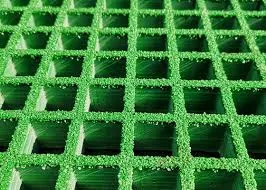
-
 Afrikaans
Afrikaans -
 Albanian
Albanian -
 Amharic
Amharic -
 Arabic
Arabic -
 Armenian
Armenian -
 Azerbaijani
Azerbaijani -
 Basque
Basque -
 Belarusian
Belarusian -
 Bengali
Bengali -
 Bosnian
Bosnian -
 Bulgarian
Bulgarian -
 Catalan
Catalan -
 Cebuano
Cebuano -
 China
China -
 China (Taiwan)
China (Taiwan) -
 Corsican
Corsican -
 Croatian
Croatian -
 Czech
Czech -
 Danish
Danish -
 Dutch
Dutch -
 English
English -
 Esperanto
Esperanto -
 Estonian
Estonian -
 Finnish
Finnish -
 French
French -
 Frisian
Frisian -
 Galician
Galician -
 Georgian
Georgian -
 German
German -
 Greek
Greek -
 Gujarati
Gujarati -
 Haitian Creole
Haitian Creole -
 hausa
hausa -
 hawaiian
hawaiian -
 Hebrew
Hebrew -
 Hindi
Hindi -
 Miao
Miao -
 Hungarian
Hungarian -
 Icelandic
Icelandic -
 igbo
igbo -
 Indonesian
Indonesian -
 irish
irish -
 Italian
Italian -
 Japanese
Japanese -
 Javanese
Javanese -
 Kannada
Kannada -
 kazakh
kazakh -
 Khmer
Khmer -
 Rwandese
Rwandese -
 Korean
Korean -
 Kurdish
Kurdish -
 Kyrgyz
Kyrgyz -
 Lao
Lao -
 Latin
Latin -
 Latvian
Latvian -
 Lithuanian
Lithuanian -
 Luxembourgish
Luxembourgish -
 Macedonian
Macedonian -
 Malgashi
Malgashi -
 Malay
Malay -
 Malayalam
Malayalam -
 Maltese
Maltese -
 Maori
Maori -
 Marathi
Marathi -
 Mongolian
Mongolian -
 Myanmar
Myanmar -
 Nepali
Nepali -
 Norwegian
Norwegian -
 Norwegian
Norwegian -
 Occitan
Occitan -
 Pashto
Pashto -
 Persian
Persian -
 Polish
Polish -
 Portuguese
Portuguese -
 Punjabi
Punjabi -
 Romanian
Romanian -
 Russian
Russian -
 Samoan
Samoan -
 Scottish Gaelic
Scottish Gaelic -
 Serbian
Serbian -
 Sesotho
Sesotho -
 Shona
Shona -
 Sindhi
Sindhi -
 Sinhala
Sinhala -
 Slovak
Slovak -
 Slovenian
Slovenian -
 Somali
Somali -
 Spanish
Spanish -
 Sundanese
Sundanese -
 Swahili
Swahili -
 Swedish
Swedish -
 Tagalog
Tagalog -
 Tajik
Tajik -
 Tamil
Tamil -
 Tatar
Tatar -
 Telugu
Telugu -
 Thai
Thai -
 Turkish
Turkish -
 Turkmen
Turkmen -
 Ukrainian
Ukrainian -
 Urdu
Urdu -
 Uighur
Uighur -
 Uzbek
Uzbek -
 Vietnamese
Vietnamese -
 Welsh
Welsh -
 Bantu
Bantu -
 Yiddish
Yiddish -
 Yoruba
Yoruba -
 Zulu
Zulu
Efficient Water Storage Solutions for Sustainable Living and Conservation Practices
Understanding GRP Water Tanks A Modern Solution for Water Storage
In the realm of water storage solutions, Glass Reinforced Plastic (GRP) water tanks have emerged as a popular choice for both residential and industrial applications. These tanks are renowned for their durability, lightweight nature, and corrosion resistance, making them ideal for a variety of environments and uses. In this article, we will explore the construction, advantages, and applications of GRP water tanks, shedding light on why they are becoming a preferred option for many.
Construction of GRP Water Tanks
GRP water tanks are made from glass fibers and a polyester resin, which combine to form a composite material that exhibits superior strength and lightweight characteristics. The manufacturing process involves layering glass fibers and resin to create a robust structure that can withstand the pressures of water storage. The modular design of GRP tanks allows for easy construction and installation, as they can be assembled on-site to accommodate space constraints or specific capacity requirements.
Moreover, GRP tanks are available in various shapes and sizes, catering to specific needs, from small residential units to large industrial tanks. The tanks can be designed to meet varying regulations and standards, ensuring quality and safety for stored water.
Advantages of GRP Water Tanks
One of the primary advantages of GRP water tanks is their resistance to corrosion. Unlike traditional metal tanks, which can rust over time, GRP tanks are impervious to most chemicals and environmental conditions, ensuring a longer lifespan with minimal maintenance. This resistance significantly reduces the costs associated with replacement and repair, making GRP tanks a cost-effective solution in the long run.
Another notable benefit is their lightweight nature. GRP tanks are much lighter than steel or concrete tanks, which simplifies transportation and installation. The reduced weight also means that the supporting structures do not need to be as robust, potentially lowering construction costs.
grp water tank

Furthermore, GRP water tanks provide excellent thermal insulation, helping to maintain water temperature and reduce heat loss. This characteristic is particularly beneficial in hot climates or regions with large temperature variations. It can also help mitigate the growth of algae and bacteria in the water, ensuring better quality and safety for consumption.
Applications of GRP Water Tanks
The versatility of GRP water tanks makes them suitable for a wide range of applications. In residential settings, they are often used for rainwater harvesting systems, potable water storage, and even irrigation in gardens. Their aesthetic flexibility allows them to blend seamlessly into residential landscapes.
In industrial contexts, GRP tanks are frequently employed in water treatment facilities, chemical processing plants, and food and beverage industries. Their resistance to chemical corrosion makes them ideal for storing a variety of liquids beyond just water. They are also used in fire protection systems, providing an essential water supply for firefighting efforts.
Moreover, GRP tanks are gaining traction in developing regions where the demand for clean water supplies is growing. Their ability to be easily transported and assembled makes them a viable option for remote locations lacking established utilities.
Conclusion
In conclusion, GRP water tanks represent a significant advancement in water storage technology. With their numerous advantages, including durability, corrosion resistance, and thermal insulation, they offer a reliable solution for both residential and industrial needs. As global demand for efficient and sustainable water storage solutions continues to rise, GRP tanks are likely to play an increasingly important role in addressing these challenges, securing their place as a modern essential in water management.









